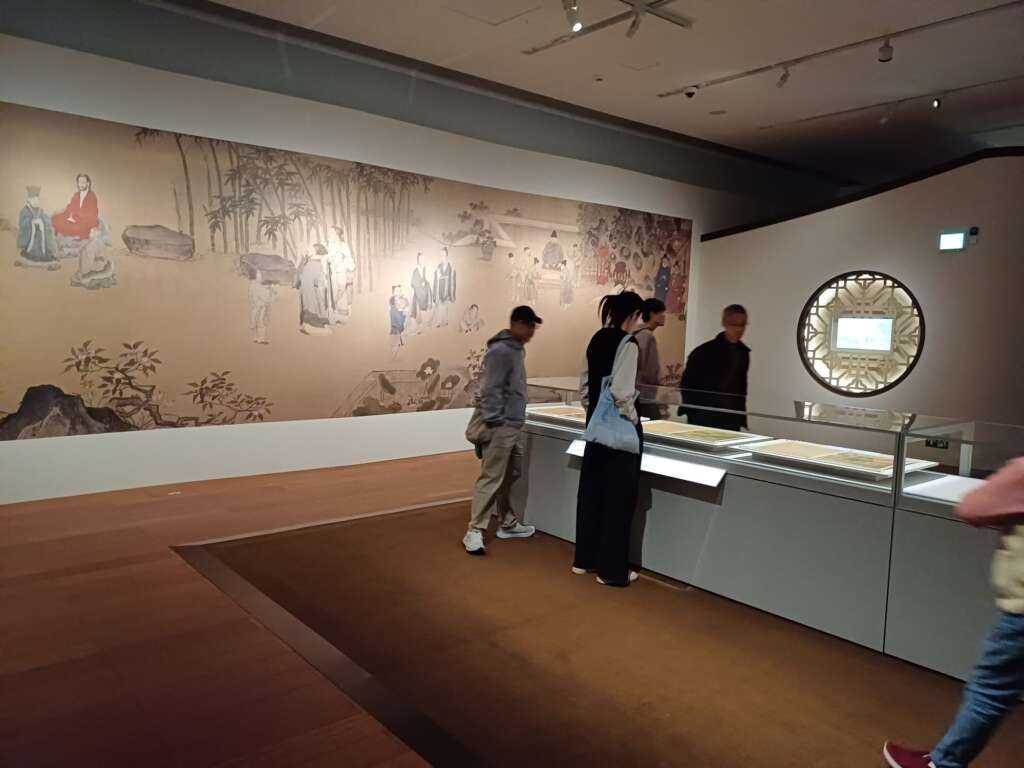THE LATEST EXHIBITION in Hong Kong of historical paintings, most about 500 years old, takes visitors to look back at the legendary lives of famed Chinese painter, calligrapher and poet Tang Yin (唐寅) and other notable scholars in the Ming dynasty (1368 -1644).

Tang’s famous painting Appreciating Plum Blossoms (觀梅圖), along with other painters’ works in the dynasty, are now displayed in an exhibition – Figure Paintings of the Ming Dynasty – in the Hong Kong Palace Museum.
Tang’s masterpiece is one of some 80 exquisite paintings exhibited in Hong Kong.
TANG’S BUMPY LIFE
With a humble background from the merchant class in Suzhou, Tang (1470 – 1524), who is also known by courtesy name Bohu (伯虎), was named for the Year of the Tiger, his birth year.

He studied hard in his youth and his outstanding talent earned him a reputation as one of the greatest masters in painting and literature in the Ming dynasty.
At a young age, Tang enjoyed academic success in a provincial examination in Nanjing. The following year he went to the capital Beijing to sit for the imperial examination, but he cheated in the exam, a move which tarnished his political career and academic life.

With his bumpy career path, Tang devoted the rest of his life to painting and calligraphy. He spent his remaining life in a peach blossom cottage he built in Suzhou. He wrote a famous poem – Song of Peach Blossom Cottage (桃花庵歌) to show his love for that particular item of horticulture. In the piece of poetry, he wrote that in a peach blossom valley, there is a peach blossom cottage: There lives a peach blossom sage.
The words “peach blossom” appear in the poem repeatedly, as if reflecting the thousands of blossoms you find in a tree.
As a master of poetry, Tang excelled in painting natural landscapes and items such as flowers, birds, mountains and ladies. His paintings and poems are filled with sentiment and literary flair.

In his painting Appreciating Plum Blossoms (觀梅圖) exhibited in the museum, Tang hailed his good friend and scholar Mei Xugu (梅谷徐). Tang used the winter plum as a metaphor to praise Mei’s noble and upright character.
In the composition, the scholar in robes stands on a bridge over a stream while two branches of the budding plum tree extend out from the precarious cliff. He is refined and the rocky landscape is rendered in angular and rigid forms.
Another Tang painting The Tree in the Wind (風木圖) will be exhibited in the Hong Kong Palace Museum in mid-March.
Apart from Tang’s poems and paintings, two other notable painters Chen Hongshou (陳洪綬 1598 – 1652) and Cui Zizhong (崔子忠 1594-1644) also became well-known for their Buddhist paintings and fan leaf works respectively in late Ming dynasty.
INVALUABLE BUDDHIST PAINTINGS
Chen was one of the most influential painters towards the end of the Ming dynasty. Apart from revelling in great accomplishments in painting landscapes, birds, insects and flowers, Chen was renowned for curating enigmatic Buddhist paintings.
Chen’s painting Children Worshipping Buddha (童子禮佛圖), which is on display in the exhibition, shows several children offering their respects to Buddha before a Taihu stone.

In the painting, one child presents a vase filled with chrysanthemums, one bows and foreheads to the ground, one kneels and hands clapped in prayer and one cleans the Buddha stupa. Chen’s invaluable piece reflects the secularization of religious beliefs in the late Ming dynasty.
FAN LEAF PAINTINGS
Meanwhile, fan leaf paintings were also associated with artists in scholarly tradition. In Cui’s fan leaf painting Fishermen (漁家圖) in the exhibition, several fishing boats are moored in the shallows. A group of fishermen – who cast nets, prepare food and play flutes – create a scene that is richly harmonious and full of life.

Cui’s brushwork is meticulous, and the colouring is classic and elegant, making the painting a rare masterpiece. An inscription revealed that it was painted by Cui for a wealthy businessman.

The exhibition showcases the artistic achievements of renowned painters in the Ming dynasty. The flourishing troves of the paintings are shown in four phases – each lasting for three months – in the museum.
Image at the top from H.C. Lu
